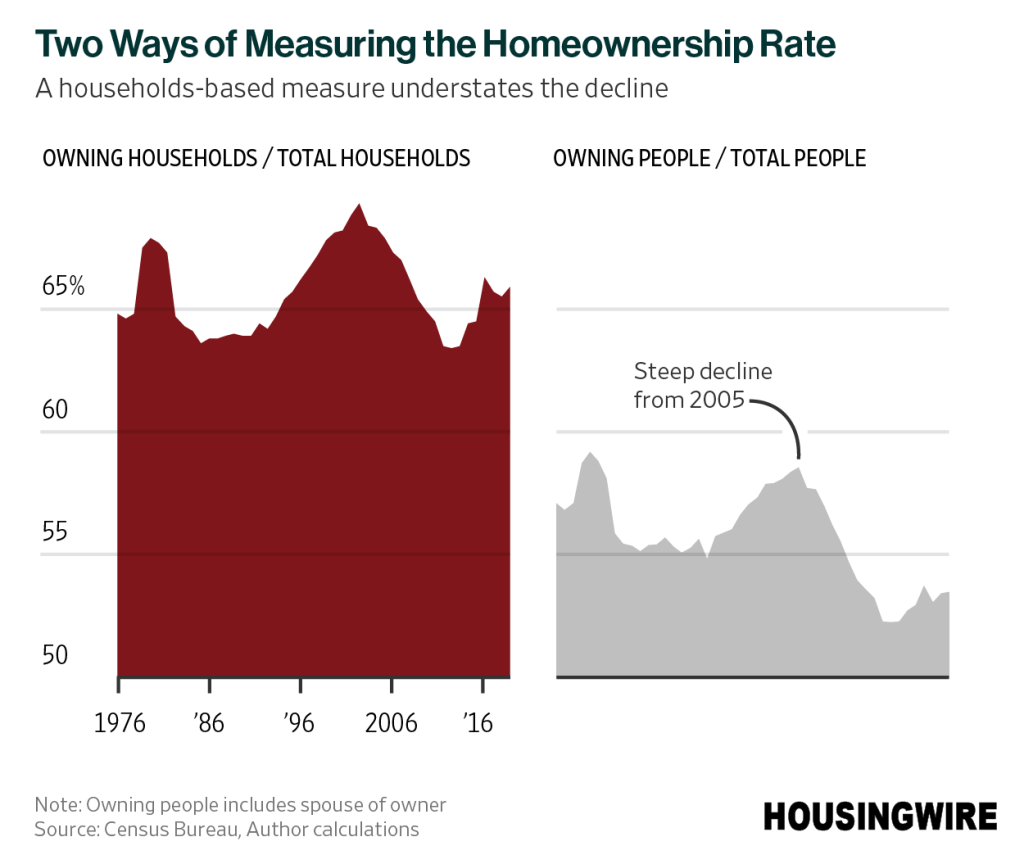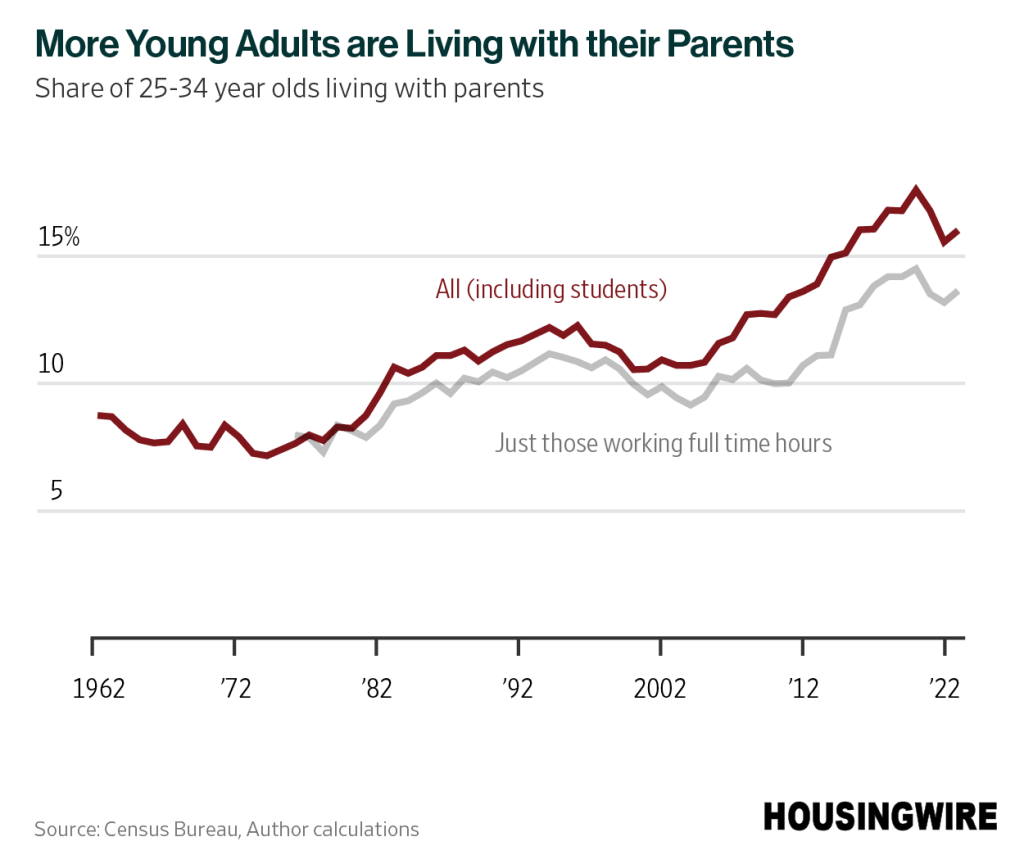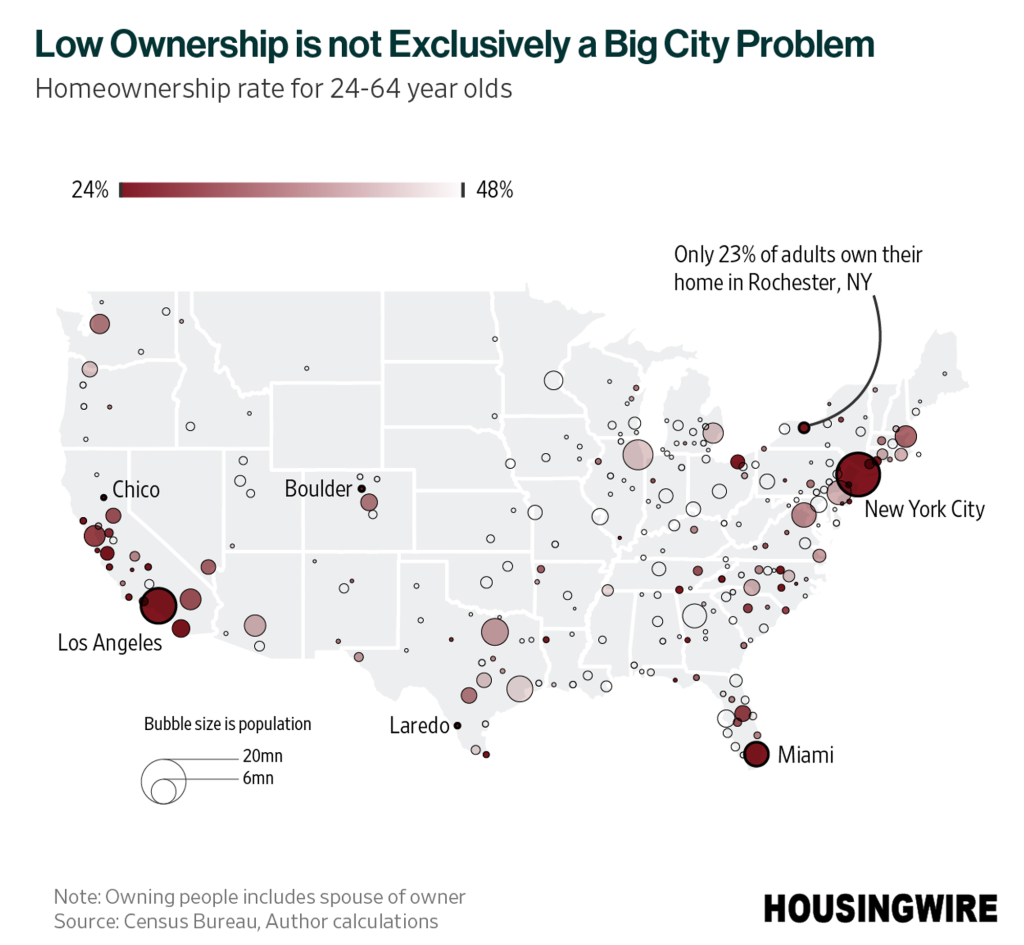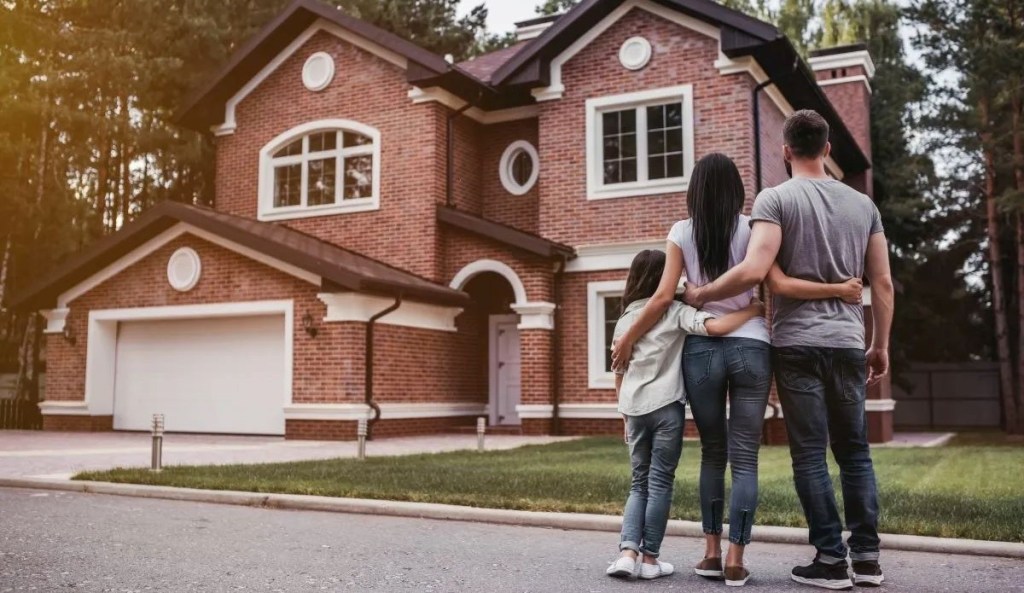Do we really have a homeownership crisis? After all, the “homeownership rate” is in the mid 60s — in the middle of the pack of other rich countries, and little different than it’s been for 50 years.
But the way we typically measure the homeownership rate — as the number of home-owning households divided by the total number of households — hides the severity of the problem.
Millions of Americans, especially young ones, are not being counted in this measure because they haven’t started their own households. They are living with their parents, or with roommates. The household-based metric of homeownership ignores these people entirely.
Casting a wider net
Instead, a population-based metric measures the number of homeowners (and their spouses), as a proportion of the total adult population. It includes even those adults who don’t head their own households.
The chart below shows the homeownership rate by these two metrics. The conventional one, based on households, is in maroon on the left. It has oscillated based on economic conditions around a stable level. The population-based metric is in gray, on the right. It shows the same cyclical oscillation, but with a pronounced downward trend that starts in 2005.

The gap between the two measures reflects a growing number of people not forming their own households. In the parlance, the “headship rate” has fallen.
It’s odd that the household-based measure dominates the conversation about housing. After all, builders, brokers, investors, and policymakers are all at least as likely, if not more likely, to be concerned with the home-owning share of the population than the home-owning share of households.
The kids are not alright
What’s particularly concerning is how quickly the homeownership rate has fallen for young people, and how all signs point to this being a reflection of affordability. As Federal Reserve researchers wrote, “after stripping out the effects of the aging population, the residual behavioral component of the headship rate has declined over time, thanks largely to rising housing costs.”
To be fair, not all of this about rising housing costs. Since young people are doing more school today than historically, other stages of their lives are delayed — including household formation. Getting married has traditionally been a catalyst for household formation, but fewer people are getting married and those that do are doing so later in life. And the fastest growing share of the population by race is Hispanic people, who evince a preference of multi-generational household living. All of these factors dampen the rate of household formation, but are not directly a result of home affordability challenges.
But these are relatively minor factors. When we look only at those in full-time work (to neutralize the schooling effect), we still see declining ownership. And even if the trend is most pronounced for Hispanics, it’s happening across race groups. There are many reasons headship is declining, but the most important one is the high cost of heading a household.

We can see further evidence that declining population-based ownership is a function of high housing costs when we look at this through a geographic lens. The places where ownership is lowest are the big cities, where housing costs are highest. That said, because incomes also play a part, some less expensive smaller cities like Rochester (NY), Laredo (TX), and Chico (CA), also have low ownership rates.

We collectively wring our hands and wonder why young people are delaying or foregoing traditional rites of passage into adulthood: marriage, or getting a driver’s license, for example. But when it comes to household formation and homeownership, the explanation is simple: striking out on your own is expensive, so many are opting not to.
Aziz Sunderji writes the housing newsletter Home Economics. He was formerly a bond market strategist at Barclays Investment Bank and a Wall Street Journal reporter.







If President Trump is elected and makes good on his promise to deport all illegal aliens, it should empty some housing units and lower rents and prices. Problem solved.